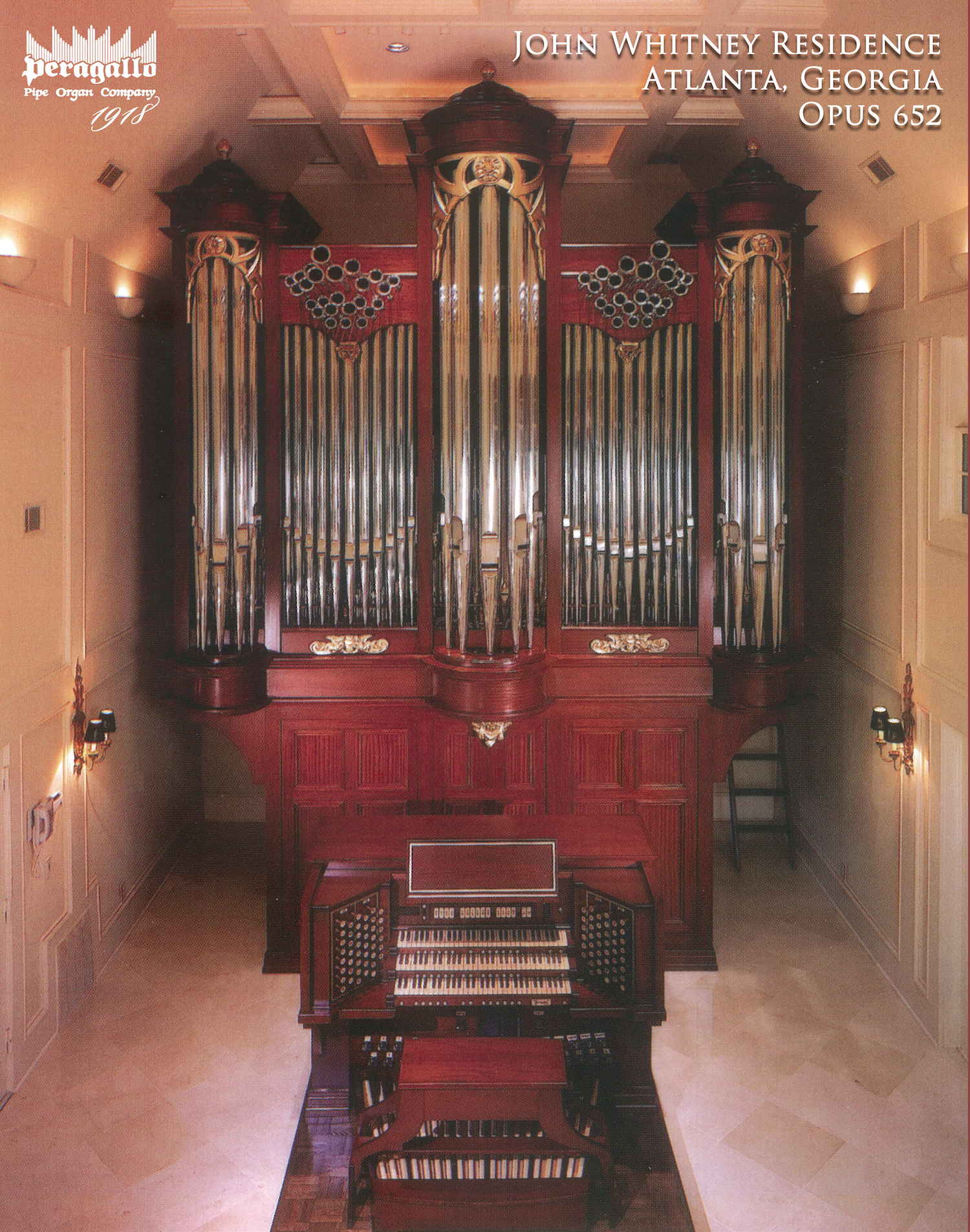Pipe Organ
 One of the highlights of the new music building will be a concert hall with exceptional acoustics designed specifically for music events. A couple of years ago Professor Tom Marshall learned about an organ that was for sale and that its owner was eager to have it moved to William & Mary, where it would be a centerpiece in the new concert hall.
One of the highlights of the new music building will be a concert hall with exceptional acoustics designed specifically for music events. A couple of years ago Professor Tom Marshall learned about an organ that was for sale and that its owner was eager to have it moved to William & Mary, where it would be a centerpiece in the new concert hall.
As there is currently no instrument for our organ students to use for their lessons, practice or recitals, this new instrument will have a direct impact on them. For the first time it will also allow many of our ensembles (Choral, Orchestral and Wind Ensemble, for example) to prepare works that involve organ accompaniment. It will also provide an opportunity for guest organists to give recitals on the Ewell Concert Series, and would serve as a new composition possibility for our composition students and faculty.
This pipe organ, Opus 652 from the Peragallo Pipe Organ Builders of Patterson, NJ, was originally built for the private Atlanta residence of John Whitney and is currently dismantled and in storage. The intended destination is for the concert hall in the new music performance facility at William & Mary. The organ is of three manual and pedal design with 24 ranks that include a total of 1,002 speaking pipes. The pipes of the instrument are enclosed in a free standing hand crafted casework on the far end of the music room. The key desk is in traditional Skinner draw knob style constructed of dark mahogany. The draw knobs are of rosewood with maple inserts. The key coverings are of padauk and maple.
The tonal design is decidedly French Romantic. The Grand Orgue includes a complete Principal chorus. The Positif includes a variety of open and capped flutes, a complete cornet decomposé and a variety of wonderful reeds of both chorus and solo style. The Récit is complete with large warm strings and a Cavaillé-Coll style Hautbois. The Pédale includes five 16’ voices and three 32’ colors to shake the room. All of the tonal finishing was performed by the Peragallos themselves as the instrument was being installed in the room.
The case is of African Mahogany with hand carved grilles in gold in the rounded towers with the Whitney family monogram. The facade contains the functional pipe work of the Grand-Orgue’s Montre and Prestant. These pipes are of polished zinc and include rear roll tuners, gothic or Roman arched mouths and extended pipe toes.
The crowning jewel of the instrument shall is the stately Trompette en Chamade. This set of 49 reeds are positioned horizontally high in the casework. These pipes provide the organist with a most useful tool for processional and fanfare effect.
We are very excited about all of the opportunities this new instrument will provide our students and ask for your support in making this endeavor happen.
Give Now to the Pipe Organ Fund
- Gerald Bullock M.Ed. ’97, Executive Director of Development, Arts & Sciences
- 757-221-1023
- igbull@wm.edu